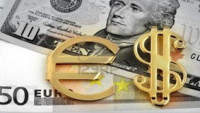 The return of US markets from their long weekend saw equity markets fall back sharply yesterday, as rising bond yields across the globe reflected growing market concern that central banks might have to hike rates and embark on quantitative tightening much more aggressively than had originally been priced.
The return of US markets from their long weekend saw equity markets fall back sharply yesterday, as rising bond yields across the globe reflected growing market concern that central banks might have to hike rates and embark on quantitative tightening much more aggressively than had originally been priced.
There is little doubt that bond markets have driven this move, with tech stocks and other highly valued areas of the market getting sold off heavily. The US 2-year yield which is probably most correlated with where market rates are heading moved back above 1% and has risen more than 30bps this year alone. Asia markets have followed on from yesterday’s declines with further weakness, with the Nikkei 225 falling heavily. This weakness looks set to translate into a similarly negative start for markets here in Europe later this morning.
With inflation very much front of mind, today’s CPI numbers from the UK, Germany and Canada are only likely to reinforce the narrative that central banks are likely to be raising rates more than once as we move through the first half of 2022.
UK unemployment fell back to its lowest level since July 2020 yesterday, however the fall to 4.1% was overshadowed by a fall in wages to 3.8%, putting further pressure on the squeeze on incomes as the cost-of-living squeeze was exacerbated further.
Even with the UK unemployment rate still well above pre-pandemic levels of 3.8%, and the number of payrolled employees rising by 184k in December the number of vacancies also increased, rising to 1.25m. Compared to the pre-pandemic the figures showed that there were 459k fewer people in work, and no guarantee that these people will return to the workforce any time soon.
While that might mean wages probably won’t fall much further, that doesn’t mean that they will start to play catchup with prices which are showing little sign of slowing.
With UK CPI expected to rise to match an 11 year high of 5.2%, when the December inflation numbers are released later this morning, and with further increases in prices forecast in the coming weeks, a number of 5.3% would represent the highest level since April 1992.
A number of this magnitude would inevitably heap further pressure on the Bank of England to raise rates again when they meet next month, having already belatedly pushed up the base rate back in December.
Yesterday’s sharp rise in global yields is already reflecting rising market concern that rates may well have to rise much quicker in order to mitigate the more persistent effects of what is currently taking place all around the world, when it comes to rising prices. While US yields surged even higher yesterday, UK 10-year gilt yields also edged up hitting their highest levels since May 2019, while 2-year yields hit a 3 year high.
While CPI is expected to rise to a new multiyear high, the rise in RPI is an even bigger reminder of how inflation is affecting consumers more broadly. Last month it rose to its highest levels since 1992, at 7.1%, and with energy prices showing no signs of slowing we could see both measures continue to move higher into the spring.
Today’s inflation numbers will also make for an uncomfortable afternoon for Bank of England governor Andrew Bailey later today when he sits in front of MPs and has to go over the financial stability report. It is highly probable that the topic of the central bank’s credibility will come up when it comes to dealing with the UK economy and the challenges it faces when communicating its intentions to financial markets.
Against this backdrop it makes it all the more baffling as to why any government would think that a raft of fresh tax rises, which are due to kick in at the beginning of April, could be considered in any way a good idea.
German CPI for December is expected to be confirmed at 5.3%, the highest level since 1992, while CPI in Canada is expected to rise to 4.8%, up from 4.7%.
EUR/USD – slipped back below the 1.1380 level yesterday, and could move back towards 1.1280 where we have trend line support from the recent lows. A move below 1.1280 reopens the November lows.
GBP/USD – failure at the 200-day MA and 1.3750 area has seen the pound slip back towards 1.3570. A break below 1.3750 opens up the risk of a move back towards 1.3480, and a move towards 1.3420. We need to break above 1.3750 to signal further gains towards 1.3830 initially.
EUR/GBP – yesterday’s failure at 0.8380 has seen the euro slip back with a move through 0.8320 targeting the 0.8280 level and 2020 lows. Only a move through 0.8380 targets 0.8420.
USD/JPY – rebounded from cloud support at 113.50, but we need to move back above 115.30 to retarget the recent highs above 116.00. A move below 113.50 opens up the 112.80 area.












